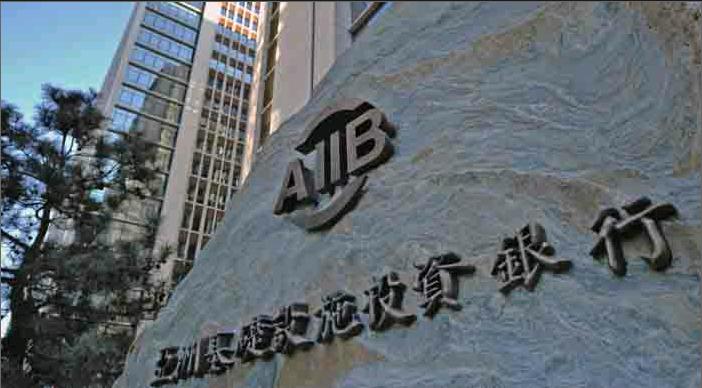PATHWAY TO A NEW ERA
2017-11-27ByJamesRae
By+James+Rae

At the 19th National Congress of the Communist Party of China (CPC), General Secretary Xi Jinping of the CPC Central Committee was re-elected for a second five-year term. While paying heed to his predecessors, particularly the foundations built by luminaries Mao Zedong and Deng Xiaoping, Xi laid out principles that constitute the Thought on Socialism with Chinese Characteristics for a New Era.
While it is significant that Xi Jinping Thought is now part of the intellectual tradition descending from Karl Marx and Vladimir Lenin to Mao and Deng in China, the identification of a new era is what is most bold and striking. While Xi is steering the nation on the well-worn and successful path trodden since the Four Modernizations were introduced in the 1960s and the 1970s, we can truly see China today as fully a great power, secure in its domestic stability and economic growth, and now confidently taking a share of authority over global governance.
Xis vision of the Belt and Road Initiative reproducing Chinas historical connections to the outside world through the vehicle of trade was fi rst announced four years ago in Astana, Kazakhstan. Today, that vision is reality and has placed China once again at the center of the universe, or at least, the focal point of global trade and investment.
A fresh face
The 2000s, and particularly these past fi ve years, have witnessed maturation of the Chinese economy, moving quickly from export-oriented workshop of the world to a service economy driven by domestic consumption. In a nation of 1.3 billion people, perhaps 400-500 million could now be considered middle class, a number unthinkable perhaps even a decade ago.
Chinas infrastructure is the envy of the developing world, its city skylines are dotted with world-class architectural forms, and its transportation networks, electricity grid and communications technologies rapidly advance. Not only does high-speed rail make nationwide land travel within a day feasible, but delivery services like JD.COM and Taobao bring consumers sundry items within hours or even minutes. Huawei and Tencent are poised to become global innovators in hardware and software, and courtesy of Alibaba, e-commerce is already more advanced in China than anywhere else in the world. Chinas military has never been stronger, with enormous investments in the ongoing modernization of the armed forces and, especially, the complete shift from a coastaloriented navy to a blue-water navy capable of patrolling the oceans waters, as other naval powers have done in the past.endprint
Yet what I fi nd most intriguing is Chinas new acceptance of itself as a great power, of Xis initiation of a new Silk Road project, and of that projects rapid formalization into the Belt and Road Initiative and the Asian Infrastructure Investment Bank (AIIB). This is the natural extension of Chinas development model, its burgeoning economic growth, its emphasis on reform and opening up, and its “going out” foreign policy.
As Xi said, “The great rejuvenation of the Chinese nation will become a reality in the course of reform and opening up.” In that sense, it is truly a new era; not a break with the past, but a tilting of the needle more dramatically upward than the linear trajectory of Chinas rise heretofore.
Barricades to stride across
Of course, domestic obstacles loom, and before examining more fully Chinas place on the world stage, we should look at cautionary tales that could push the Chinese dream farther into the future than even the modest goals already set for 2020, 2035 and 2049. While the size of Chinas middle class is formidable, can it be extended to half the population, to two thirds?
Combatting gross inequality will continue to be a chief priority. Urban incomes(unsurprisingly) reveal enormous disparities between senior managers and migrant workers, as do wages in tier one (Beijing, Shanghai, Guangzhou and Shenzhen) and tier two cities, and the urban-rural divide is stark. Thus, a chief priority must be making provincial capitals and secondary and tertiary cities attractive for local residents; from comfortable wages to enhanced transportation, and from high quality schools to green space for public enjoyment and clean air to breathe. Those who are left out of the Chinese dream will become frustrated, particularly if they perceive that their opportunities are not equal to those of others in more advantageous positions. Thus, we can expect the anti-corruption drive of the past five years to continue in the coming five. Excesses of wealth, from decadent morals to currying favor with offi cials or by offi cials, jeopardize the hard-won gains of several generations of earnest workers who have returned China to the cusp of national rejuvenation and greatness.
A related challenge continues to be managing asset and property inflation, which makes buying into the Chinese dream scarcely possible for those who do not already enjoy home ownership from past decades. Speculating on the existence of bubbles and when they would likely burst has been a common parlor game for years, both inside and outside China. Although the economy remains frothy, with some concerns over excess debt and non-performing loans, demand remains strong, as over half a billion people desirous of owning a home or improving their living conditions have yet to enter the ranks of the middle class.endprint

Nevertheless, the value of property in Beijing and Shanghai seems far beyond that of comparable housing and real estate in Asian megacities like Bangkok, Kuala Lumpur, Seoul or Tokyo. Relatedly, Chinas population is aging, so the nation needs to work out how best to care for the elderly and fund its growing healthcare and pension provisions, a problem that afflicts all rich countries. Of course, the CPC has long recognized these challenges and effectively managed public policy to moderate risk and continue strong economic growth. Certainly, careful stewardship of the economy is priority number one, and Chinas journey from widespread poverty to the second largest economy has taken place in a short 30 years, a pace of development faster than that experienced by any other country in the history of the world. And that brings us to this place, this moment, this beginning of a new era.
Adapting to a new era
Economically, China already has global connections and offers an attractive investment model that seeks to build infrastructure and extract resources without strings attached. Chinas strong central guidance could indeed serve as a model for other countries seeking rapid economic development while maintaining domestic stability. The China-proposed Belt and Road Initiative and the AIIB are platforms founded at an opportune time amidst a global leadership vacuum following financial contagion. The new focus on peace and development signals Chinas commitment to becoming a stakeholder in world economic and diplomatic governance, and is cemented by the inclusion of the Belt and Road Initiative in the CPC Constitution.
Now, we can observe the importance of Chinas emphasis on core socialist values such as democracy, justice and the rule of law, which, if upheld, can promote prosperity and equality in international relations.
Western-led institutions such as the World Bank and the International Monetary Fund, dominated by the Group of Seven(G7) states (United States, Japan, Germany, United Kingdom, France, Italy, Canada) and their market orthodoxy, have not achieved equitable global development nor ensured satisfaction in G7 states (witness the rise of nationalism across the West). Whether Chinas approach, which relies more on state-owned enterprises and heavy doses of infrastructure spending and building, can rectify international inequity is far from certain. What is more clear is that Chinas entrance onto the world stage not only brings another major nation able to promote devel- opment and drive global economic growth, it also forces Western-dominated institutions to finally take greater account of East Asian development approaches and consider reconfiguring themselves to accommodate Chinas rise.
The Belt and Road is not strictly limited to connecting China to South Asia, Central Asia, Africa and Europe, but also provides a channel for emerging economies to emulate and democratize international relations that reaches around the world to the least developed countries in the Global South. At least in economic and financial affairs, the world is multilateral, and competing centers of power will have to work cooperatively to manage world trade, currency markets, commodity prices, financial speculation and foreign direct investment. Xis commitment to reliably engage with the world is a dramatic outcome of the 19th CPC National Congress, now specified in the CPC Constitution as a “principle of achieving shared growth through discussion and collaboration, and pursuing the Belt and Road Initiative.”endprint
